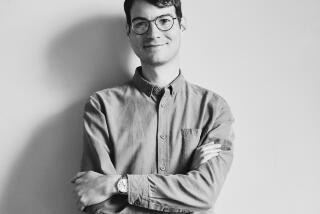âHouse of Stoneâ by Anthony Shadid
A yearning for home, wherever that may be, is one of many themes that the late New York Times journalist Anthony Shadid so deftly touches on in âHouse of Stone: A Memoir of Home, Family, and a Lost Middle East.â
Shadid, a Lebanese American who was born and raised in Oklahoma City, takes leave from his job as a Middle East war reporter in 2007 to rebuild the abandoned and war-ravaged home of his great grandfather in the small Lebanese town of Marjayoun.
But even before he takes on the project, Shadidâs idea of the Middle East as an ancestral home, a place that yields answers to personal and family questions, is challenged by what he finds during his years covering bloody conflicts in Israel (where he was shot in the shoulder by an Israeli sniper while reporting from the West Bank for the Boston Globe), Libya (where he was taken prisoner last year and beaten with three other journalists by Moammar Kadafiâs forces), Iraq. Syria was Shadidâs last assignment, and it was there he lost his life at 43 in February, apparently from an asthma attack.
The place Shadid was âusually headed to was no longer the one with which I had once been so enamored,â he writes. âThe Middle East that had fascinated, preoccupied, and saddened me for decades was gone.â
âEspecially compelling to me was something difficult to articulate but that underlay everything, an approach to life â an ease, an elegance, an absence of the unnecessary. Anything hurried, superficial, purely mercenary, or delusory was rejected. Central was a slowness allowing for the consideration of every choice. The state of the spirit, it is believed, reveals itself in small tasks, rituals â all the things that war interrupts.â
Shadid, who was fluent in Arabic, was known for writing about Middle East conflicts with a humanity often absent in other U.S. coverage. As a Washington Post reporter, he won two Pulitzer Prizes for his articles on the effects of the war â and later the U.S. troop withdrawal â on the civilian population in Iraq.
In âHouse of Stone,â he rarely deconstructs his role as a journalist, but when he does, itâs indelible. âWe never find out, or think to ask, whether the village is rebuilt, or what becomes of the dazed woman who, after one strange, endlessly extended moment, is no longer the mother of children.â
World War I drove the first Shadid from the familyâs Lebanese home to America, while nearly a century later, divorce and disillusionment drove Anthony Shadid from his home in suburban Maryland.
He rebuilds his great grandfatherâs home with ancient tiles bought from shady vendors in the city, with local tradesmen who out-haggle him on every turn. Scornful neighbors canât imagine why heâd pour so much money into a house better off razed, yet he plants a garden â and an olive tree â in the dust that he imagines was once full of carefully tended flowers, herbs and trees.
While rebuilding, he uncovers the history of a family he never met. But he isnât unduly poetic about the realities of being a Shadid and knows the reputation his clan has in the area.
âMy relatives are people who can fall into an argument over the choice of a toothpick; or, at an unexpected moment, smile buoyantly and clutch your cheek; or imply at a glance that you will soon be languishing in prison. (Not unjustifiably.) They are naturally mercurial, passionate. In Marjayoun, the citizens who remember say it flat out: âThe Shadids are crazy.â I donât think my family was insane. I believed simply that their secret mission on earth was to drive everyone else to the brink and then say, of the decades of therapy necessitated by their complexities, âI am not paying for this!ââ
In Arab fashion, the book moves at an unhindered pace and involves a bevy of eccentric characters â from the 76-year-old master carpenter whose diva-like ways both enrage and endear, to a pitiful, pot-smoking friend who hasnât had a job in years. The house, of course, is where all the characters converge.
On first impressions, Shadid wrote: âMost of the downstairs looked looted and reminded me of scenes from Baghdad after Saddamâs fall. A faded picture of a stout model from an Arabic-language lifestyle magazine, her hairdo a decade old, was stapled to a beam. Wires dangled from the ceiling, as did light fixtures, though most bulbs were missing. The shoe prints of a dozen different feet left their mark in what suggested a hasty exodus.â
The people of Marjayoun who stayed despite the conflicts â be it the civil war of the â70s or recent shellings by Israeli forces that blew a hole in the second story of the Shadid house â all bear scars. Some endured with dignity, some are struggling to regain the composure they lost and others are entirely bent on self-destruction. But Shadid carves out a life in Lebanon that is as comfortable as it is alienating; itâs an existence as bittersweet as the one he left behind in America.
Knowing that Shadid lost his life shortly before this book was published makes each piece of tile he polished, each plant he nurtured, feel all the more significant. It also raises the question: Who will watch the house now that this exceptional man is gone?
More to Read
The biggest entertainment stories
Get our big stories about Hollywood, film, television, music, arts, culture and more right in your inbox as soon as they publish.
You may occasionally receive promotional content from the Los Angeles Times.











